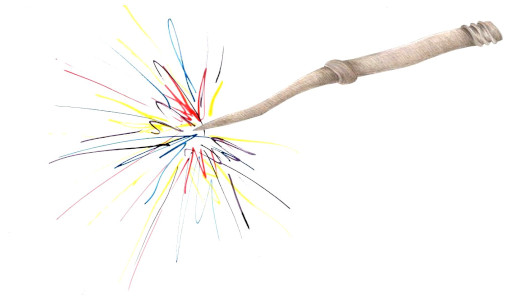Exploring new frontiers, going virtual
When we were forced to cancel TSDC’s in-person activities, we were very aware that the pandemic’s effects would be patterned (as so many things are) by social privilege and disadvantage. We were concerned about what life would be like for the Sustaining Connections’ participants. It felt important to touch base with everyone and see if we could figure out an alternate way to sustain our connections while maintaining physical distance.
We sent out an email to the group letting them know that the University had made Zoom available to us. We knew that some participants had neither computers nor internet access, so we proposed using Zoom as a combined video and phone conferencing platform. We asked participants if they would be interested in trying out this option. For those who were unfamiliar with the platform, we offered to meet one-on-one to figure it out together.
During our first couple of gatherings we focused on checking-in. After a few meetings, however, we began looking at ways to adapt some of the workshop activities that were familiar to participants. Not only were we unable to explore together in a shared physical environment, many of the workshop’s virtual participants had only enough space to be seated in front of a computer. Others were only able to connect by phone. This ruled out Image Theatre — a mainstay in TSDC’s performance creation toolkit. But we still had prompts — which, as we’ve said, we like to think of as ‘magic wands’ for channeling creative-impulse spells.
With one prompt we asked participants to find an object that reminded them of something that makes them happy, to invent a character who might interact with this object, and to share a 1 to 3 minute story about their character’s interaction with the object when we next met (See Performative Modeling for a glimpse at how we used this prompt).
In subsequent gatherings, since we were unable to use the collective character development documentary exercise that’s based on images created during Image Theatre explorations — we came up with a new prompt. We invited participants to imagine how characters might react to an action that we could not actually see. (This approach also had the advantage of allowing participants who could only phone in to Zoom to fully participate in the explorations.)
Building on the characters participants previously created, we asked each participant to imagine how one of their fictional characters might react to an imaginary gift left at their door by another fictional character. (This had the advantage of reflecting how folks were getting things delivered during the period of lockdown.)
Why would Joyce leave a ball of orange chalk outside Trish’s door?
Each participant answered before we moved on to another imagined gift and another imagined giver/receiver combo. Participants often responded by referencing something that had been said in the previous workshop, where participants shared objects that might bring them joy. Because of the collective nature of this exercise, however, a sense of possible characters who had different experiences and motivations than the actual participants began to emerge, just as they had in the live exercises.
Admittedly, as theatre facilitators, the process of going virtual has been/is quite daunting! As always, we continue to be grateful for, and inspired by, performer-advocates’ generosity, courage, and willingness to take risks and try new things.


